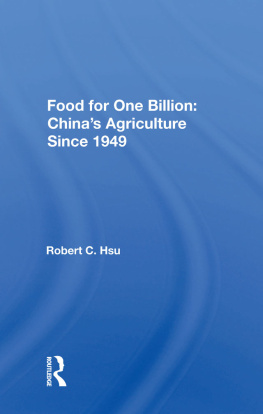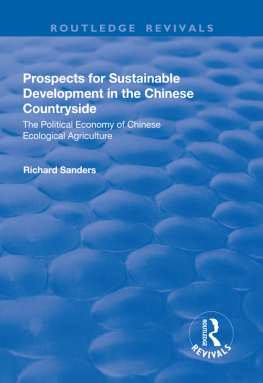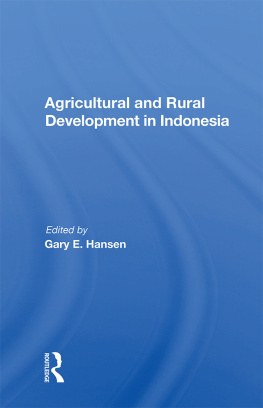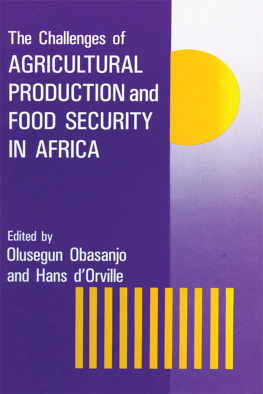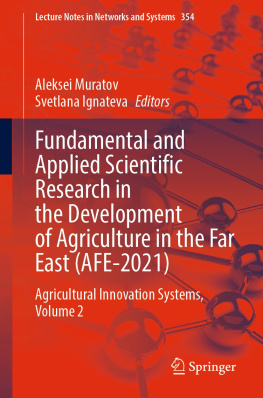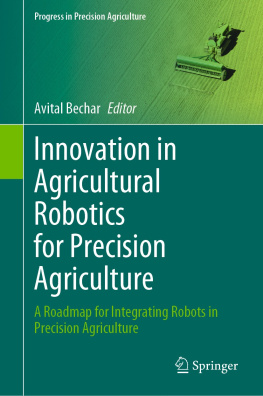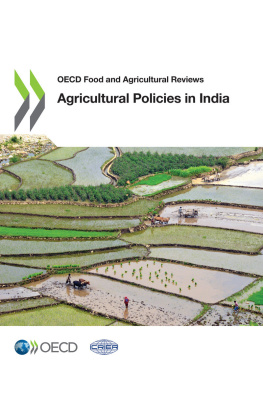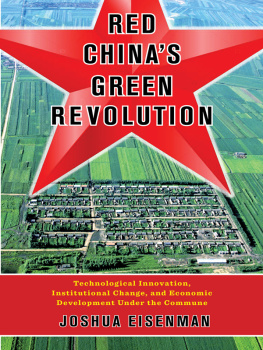Food for One Billion
Also of Interest
China's Four Modernizations: The New Technological Revolution, edited by Richard Baum
China's Quest for Independence: Policy Evolution in the 1970s, edited by Thomas Fingar and the Stanford Journal of International Studies
Perspectives on a Changing China: Essays in Honor of Professor C. Martin Wilbur on the Occasion of his Retirement, edited by Joshua A. Fogel and William T. Rowe
Huadong: The Story of a Chinese People's Commune, Gordon Bennett
China's Economic Development: Growth and Structural Change, Chu-yuan Cheng
The Chinese Agricultural Economy , edited by Randolph Barker and Radha Sinha, with Beth Rose
Economic Reform in the PRC: In Which China's Economists Make Known What Went Wrong, Why, and What Should Be Done About It, edited by George Wang
Current Economic Problems in China, Xue Muqiao, translated by . K. Fung
China: A Political History , 1917-1980, Richard C. Thornton
Available in hardcover and paperback.
Westview Special Studies on China and East Asia
Food for One Billion: China's Agriculture Since 1949
Robert C. Hsu
This book examines the agricultural policies and programs adopted by the Chinese leadership since 1949 and analyzes the role of agriculture in China's changing development strategies. Dr. Hsu gives particular attention to the measures intended to improve agricultural technology and to the sources of funds for agricultural investment. He concludes that, although the collective system has been effective in mobilizing China's rural resources for agricultural development and in promoting progress in labor-intensive agricultural technology, periodic extreme leftist policies and interference by rural party cadres have caused various kinds of inefficiency, offsetting the advantages gained from collective farming.
This is the first book to systematically analyze the ways in which China's agricultural development is being financed. By critically examining the level and nature of state resources allocated to agriculture, the author challenges the view that China has pursued an agriculture-first strategy of economic development since the early 1960s.
Dr. Hsu is an associate professor of economics at Clark University. He was educated at the National Taiwan University and Atlanta University and earned a Ph.D. in economics at the University of California (Berkeley). In 1977-1978 he was a Visiting Research Fellow at the University of Lund (Sweden) and then took a research trip to China. In 1980, as a Fulbright scholar, he was a member of the U.S. delegation to the first U.S.-ASEAN (Association of Southeast Asian Nations) Dialogue Program. Dr. Hsu specializes in the field of economic development and has published articles in the American Journal of Agricultural Economics, Asian Survey, Economic Development and Cultural Change , Journal of Political Economy, the New England Journal of Medicine, and elsewhere.
Food for One Billion: China's Agriculture Since 1949
Robert C. Hsu
First published 1982 by Westview Press, Inc.
Published 2018 by Routledge
52 Vanderbilt Avenue, New York, NY 10017
2 Park Square, Milton Park, Abingdon, Oxon OX14 4RN
Routledge is an imprint of the Taylor & Francis Group, an informa business
Copyright 1982 Taylor & Francis
All rights reserved. No part of this book may be reprinted or reproduced or utilised in any form or by any electronic, mechanical, or other means, now known or hereafter invented, including photocopying and recording, or in any information storage or retrieval system, without permission in writing from the publishers.
Notice:
Product or corporate names may be trademarks or registered trademarks, and are used only for identification and explanation without intent to infringe.
Library of Congress Cataloging in Publication Data
Hsu, Robert C.
Food for one billion.
(Westview special studies on China and East Asia)
Includes index.
1. Agriculture and stateChinaHistory20th century. 2. Agricultural innovationsChinaHistory20th century. I. Title. II. Series.
HD2098 1982 338.1'0951
82-6976
AACR2
ISBN 13: 978-0-367-01840-5 (hbk)
To Sharon, Nancy, and Steven
Figures
- Map of China
Tables
This book is an outgrowth of my research for a course on the Chinese economy that I have been teaching at Clark University off and on since the early 1970s. The course and thus the book would not have been possible without the encouragement of my colleague, Roger Van Tassel, who saw the need for such a course as early as 1971.
The initial idea for the book came from Mervyn Adams Seldon, formerly of Westview Press, in 1979. Without her initiatives and enthusiasm, this book would not have been written. She has also given me helpful suggestions during the preparation of the manuscript.
In the course of my research and writing, I have also benefited from communications and discussions with other individuals. Nai-Ruenn Chen, whose insights into the Chinese economy have long been a source of inspiration to me, has made very valuable suggestions. Wen-yang Wen has greatly enhanced my understanding of the biological-chemical aspects of agricultural technology. Last, but not least, the intellectual curiosity of many students at Clark University has been a source of stimulation to me.
To all of these individuals go my heartfelt thanks. Naturally, all shortcomings of the book are my responsibility alone.
I would also like to take this opportunity to acknowledge the financial support that I have received over the years from various sources. This support has made my study of the Chinese economy possible and thus has contributed directly or indirectly to the writing of this book. A grant from the Clark University Faculty Research Fund made the initial research possible. A grant from the Svenska Handelsbanken for Social Science Research, Sweden, enabled me to study the science and technology policies of China at the Research Policy Program, University of Lund, Sweden, during the 1977-78 academic year. An international travel grant from the Mellon Foundation financed a study trip to China in the summer of 1978. All of these contributed greatly to my understanding of China's agriculture. Finally, the Clark University Research Fund financed the cartographic works for this book.
Robert C. Hsu
The people of the United States tend to take food for granted. But to the majority of humanity, the daily struggle for food has always been the greatest challenge of life. In China, particularly, the people know only too well how bitter that struggle is, for no other country in the world has such an enormous taskfeeding more than a billion people, almost one-quarter of the world's population, on 7 percent of the world's arable land.
This Malthusian nightmare of severe population pressure on limited land has haunted the Chinese for so long that it has affected their collective psyche, customs, and language. For example, a common form of greeting near mealtime is, "Have you eaten?" One's job is commonly referred to as one's "rice bowl." Interestingly, the coming of communism has even enriched this food-centered vocabulary and consciousness. For example, in recent years, the lifelong tenure system for party and government officials that has prevailed since 1949 has been criticized as providing an "iron rice bowl" to incompetent officials. Similarly, the egalitarian system of income distribution that prevailed in many places during the Cultural Revolution (1966-76) has been criticized for providing a "big rice pot" for everyone to eat from, and thus reducing people's incentives to work.

